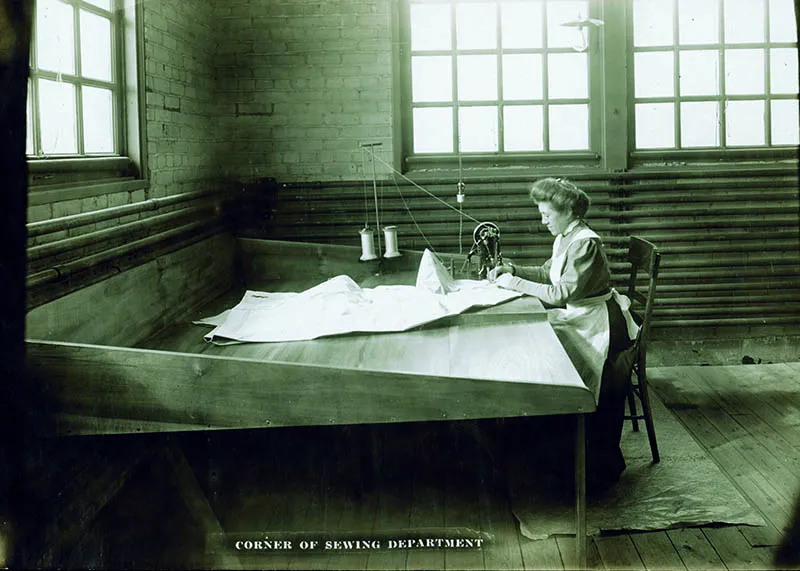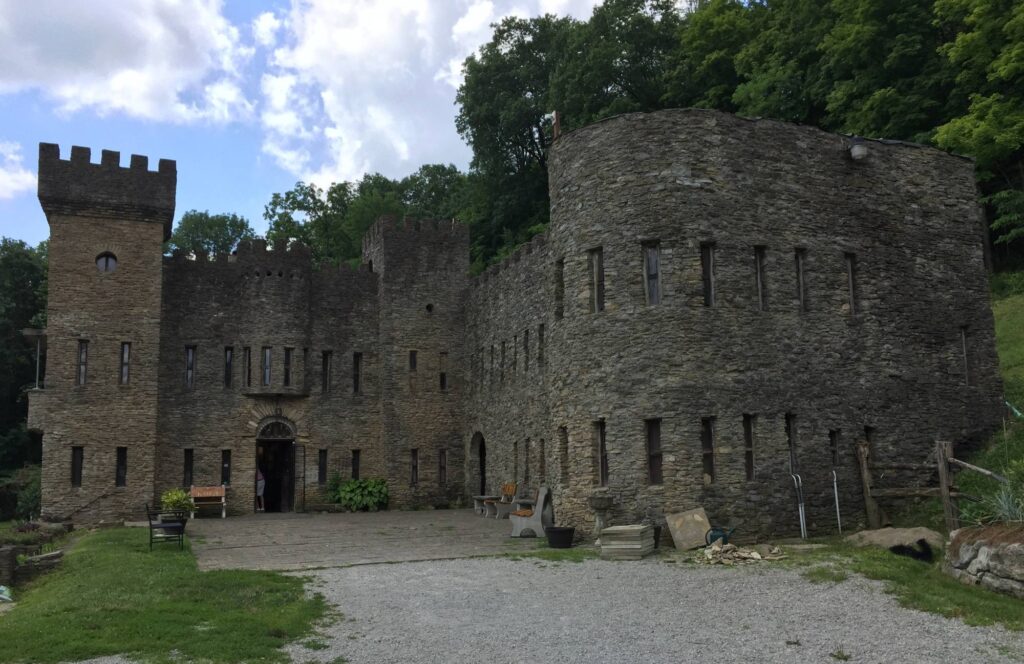If I were to ask you a question like, “Who was the first woman to work in the aviation industry?” would you have any idea who I was talking about? You might assume the answer would be someone like Katherine Wright, sister or Orville and Wilbur, but that’s not it. It was nobody related to the Wrights at all (although it is a safe assumption to say she, at least, worked for them.)
The identity of this fine woman is Ida Holdgreve, a name that some believe should be at least a little more historically celebrated than it barely is now. The story of how she earned this title (and there is no doubt she earned it) is, in fact, quite fascinating.
Ida Holdgreve’s Story Starts With A Typo
For just a moment, let’s make believe that you are Orville and Wilbur Wright. (Yes, I know it’s physically impossible to be two people, but this is an analogy, so let’s just go with it.) You’ve recently became a household name because of your little flight in Kitty Hawk, so you start your own aviation business just outside Dayton and you quickly learn that you need to hire some new people. One of the people you really want to hire is someone to do some sewing, so you call your local paper and say, “Hi guys, we need to place an ad. We’re hiring someone to do some plane sewing, you know for the canvas we use on our wings and all that. And if that could run in all the papers until we hire someone, that would be great.”
The problem that apparently nobody noticed at the time was that “plane” (as in airplane) sewing wasn’t exactly a known thing at the time … so when the ad went out, it said that the Wright Brothers were looking for someone to do “plain sewing” because the words plane and plain sounded exactly alike.
Ida Holdgreve was among the first women to see this ad, and she probably thought to herself, “they’re just looking for some plain sewers, nothing too special or complicated, and I am an accomplished dress maker, so I guess I should apply for the job.” And that’s exactly what she did. And then she got hired, thus becoming the first woman ever employed in the aviation industry.
Who Was Ida Holdgreve?
Ida Holdgreve was born on November 14, 1881, in Delphos, Ohio, a small farming community about 80 miles north of Dayton. Later she would go on to work as a dressmaker. At the age of 27, she moved from Delphos to Dayton, which at the time was a risky thing for a young unmarried woman to do. For the next couple of years, she found a few jobs making clothes. Two years later she spotted the slightly mispelled ad. After getting the job she told the Delphos newspaper, she thought she could do the job, as long as it was just some basic sewing.
But, soon she would be trained by Duval La Chapelle (The Wright’s french mechanic) on how to make airplane fins, wings, rudders and stabilizers. Of the roughly eighty people hired by the Wright Brothers, Ida was the lone female, working in the trenches with the men to build the airplanes.
Some time after she began working in aviation, she told her hometown newspaper that part of the reason she liked the job so much is because the area she worked, a mile or so west of Dayton, was in the middle of a corn field, which reminded her of Delphos, a small village surrounded by corn.
During the time Holdgreve was employed by The Wright Company, they made over one hundred and twenty airplanes in thirteen different models, including three of their most well known models, including the Wright Model B, the Model C-H Floatplane, and the more advanced Model L. Every day, she would spoil two large spools of threads into the machines and begin to work.
During an interview with her former local newspaper, she said she really enjoyed working with the Wrights. Wilbur, she said, was shy and quiet while Orville was less so. She claimed both men kept very busy, however Orville did manage to spend some time talking with her as the two got acquainted. Wilbur, however, was also kept busy with a series of legal challenges involving their patents, which seemed to keep him away more than he was at work.
A Note On The Times
By the time the Wright Brothers started making airplanes, the concept of aviation had been around for quite some time. In China during ancient times (and later in Japan), there is evidence of man-carrying kites that could transport a person at least a short distance. This was the only real option for anything resembling aviation until the 18th century led the way to the Hot Air Balloon and then the Airships (and based on the Hindenburg Disaster of 1937, we can start to understand why Airships and Zeppelins aren’t all that much of a thing today.) Then all sorts of Gliders were all the rage for a short time before the Wright Brothers did their thing.
For some very obvious reasons, aeronautics had long been something only for the Uber-Rich (except, maybe, for standing on the ground and looking at the sky in amazement, which practically anyone could do.) And, for the most part, it was considered a hobby (or a sport) and nothing like today where the average Joe can board the latest 747 and fly off to visit Aunt Irma wherever she lives.
Dayton, in 1900, might be in mostly the same place as it is today, but at that time it was also much smaller and had way fewer suburbs (and population). In fact, it was pretty much a typical small city, with little to distinguish itself from all the other small cities that were developing across the nation.
Life, especially for women, was likewise massively different than it is today. For example, seeing a woman employed outside clerical positions, dress making, and other fields that weren’t exactly suitable for the common manly man was a rarity. The fact that Ida was hired in the aviation field made her a notable personality, not just in her hometown, but everywhere else as well. Stories about her were fairly common in the Delphos papers, but soon her name would appear in Dayton papers, then Cincinnati and Columbus, and it wasn’t long before stories were being told outside the state of Ohio.
Eventually, Ida Holdgreve’s name would become almost forgotten, and had it not been for Dayton museums like the Dayton Aviation Heritage National Historical Park and the Wright Brothers National Museum, she might easily have been forgotten by now.
The Decline Of The Wright Brothers
Another reason for her name failing to stay in the limelight can be laid, inadvertently, at the feet of the Wright Brothers themselves. If the Wrights are said to have a fault (although I’d say they had a few) it was that they weren’t thinking all that much ahead. Their main objective appeared to be developing the best airplanes that people wanted at that time. What they didn’t seem to consider is that tomorrow, people might have wanted something a bit different.
They had changed the world of aviation by proving flight was possible and then starting to design the first planes, which is all well and good. However, beyond that, there were no innovations. Once other airplane makers started building their own flying machines, they tried new things, marketing to different types of people, and before long The Wright Brothers were a bit behind the times.
Orville and Wilbur were aware of these other companies, and what they were up to. But, rather than looking at what had made them a success and how they were advancing the field of aviation, they instead focused on their own technology, and taking to court anyone who had incorporated things they had patented. Because of the number of companies that the Wrights thought needed to be looked after, and (according to some) their sheer pettiness and willingness to sue even over the most minor offenses – these lawsuits alone took so much time that the Wright Company was, for all intents and purposes, run by a single brother.
This failure to think about the future is most likely what brought the Wright Brothers empire to a relative quick close, while their competition seemed to flourish and thrive. A mere five minutes after the company was founded, Orville sold the company where, a year later, it merged with another to become The Wright-Martin Company, even though no Wrights were involved at that time.
Still, the Wright Brothers have had a lasting legacy in and around the Dayton area (and the rest of the world, too.) And, maybe in the end, that’s all that matters.
Ida Holdgreve – Not Forgotten
In some ways, I feel that Ida Holdgreve cannot be forgotten if so few people even knew about her in the first place. When she was alive and working for The Wright Company, there was a bit of news coverage about her, at least in her hometown paper where she wasn’t so much “the first woman employed in the aviation field” as she was a “small town girl making a living in the big city”.
I have no idea when, exactly, anyone noticed she was the first female who worked in the airplane industry, and somehow I doubt it happened when she was still alive. Keep in mind, at that time, few people could have imagined that the airline industry would grow to become what it is today, with massive jets that could easily fly the entire population of Idaho. (There are no cities in Idaho, right? What’s that, Boise? You sure that exists. Ok, I trust you. Nevermind that last statement, quite a few nice people live in Boise, from what I hear, so maybe the state would need two of the big jets…?)
In recent years, the name Ida Holdgreve has become more known that she probably ever was, thanks to “historical television” shows as well as a growing interest, in general, of women’s history. Before I started writing this, I had no idea she even existed. And part of me thinks that’s a crying shame.



